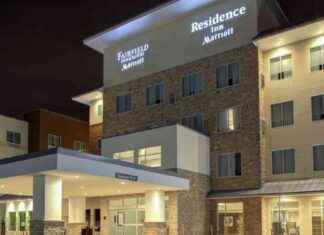The accident is still under investigation by investigators. However, they are studying video footage from the train and another locomotive that crossed the track just over an hour before the accident. Bruce Landsberg, Vice Chairman of National Transportation Safety Board, stated that the National Transportation Safety Board Vice Chairman Bruce Landsberg.
He said that the train was thrown off-track by a switch on the line. This made one set of tracks into two and was on a track that had only been inspected two days earlier.
The westbound Empire Builder was on its way from Chicago to Seattle Saturday afternoon when it came off the tracks near Joplin (a small town of around 200). Two locomotives and 10 cars were used to transport the train. Some of them fell onto their sides. The train carried 141 passengers and 16 crew.
Landsberg didn’t answer directly when Landsberg was asked about the wooden ties seen along the tracks side by side and whether recent maintenance had been done.
He said, “That will be one question that we look at.” “Maintenance is a very important concern for us. At this time, we don’t know what caused it, whether it was an issue with the track or a mechanical problem with the train. All of these questions are open.”
He stated that a preliminary report regarding the derailment would be available within 30 days.
Steven Ditmeyer is a former senior rail official and consultant. He said that investigators will examine “everything”, including the switch, wheels and axles as well as suspension and track systems. A switch such as the one in Joplin will be managed by the BNSF control centre in Fort Worth, Texas.
Ditmeyer stated that heat can sometimes cause rail lines to become bent, creating buckles on the tracks called sun kinks. This was the reason for a train derailment in Montana’s northern Montana in August 1988. An Empire Builder train ran off the tracks approximately 170 miles (274 km) east of Saco, Montana.
NTSB determined that the inspection did not find a problem with the track and that officials did nothing to warn trains about slowing down. Although the track was shifting, the crew could not see the train stop and the train continued to go at full speed.
According to the National Weather Service, temperatures were in the 80s Saturday near Joplin.
Russ Quimby is a former investigator for the NTSB on rail accidents and believes heat to be the most probable explanation. Because the locomotives in front didn’t derail, but the eight lighter coach cars to their rear did, he is certain.
Quimby stated that this has all the characteristics of a track buckle. “Sometimes a locomotive which is heavier will make it through” the buckled track. “But the cars following won’t. He said, “You saw it in this accident.”
Quimby stated that a malfunctioning switch is less likely since he believes the switch was inspected last week when the track was in the area.
David Clarke from the University of Tennessee, a railroad safety expert, suggested that another possibility could be a rail defect. Clarke is the director of the Center for Transportation Research. These problems are not always detected by regular testing, he said.
Clarke stated that speed was not an issue because trains on this line have systems that prevent collisions and excessive speeds.
“Did the switching play a role?” Clarke suggested that it could have been that the switch was flipped when the front end of the train struck the switch.
The accident site is located approximately 150 miles (241 km) northeast Helena, Montana and 30 miles (48 km) from Canada’s border. The tracks ran parallel to U.S. Highway 2 and cut through large, golden-brown wheat fields.
Allan Zarembski is the director of the University of Delaware’s Railway Engineering and Safety Program. He said that he didn’t want to speculate, but believed the derailment was caused by an issue with either the track or train equipment, or both.
Zarembski stated that major human-caused derailments have been “virtually eliminated” by railways since the introduction of a national system to prevent accidents before they happen.
As Congress works to pass a bipartisan $1 trillion infrastructure package, which includes $66 billion for Amtrak service improvements, the derailment occurs. This is less than the $80 million President Joe Biden originally requested, but it would still be the largest federal investment for passenger rail service since Amtrak was established 50 years ago.
The largest amount of money would be used to repair and improve the rail service’s 457-mile-long Northeast Corridor, as well as intercity routes that have higher commuter traffic. Amtrak’s service to the rest of America is also being expanded, with $16 billion going towards rural areas.
Bill Flynn, CEO of Amtrak, stated that the company was working closely with the Federal Railroad Administration (NTSB) and local law enforcement to find out what happened in Montana.







